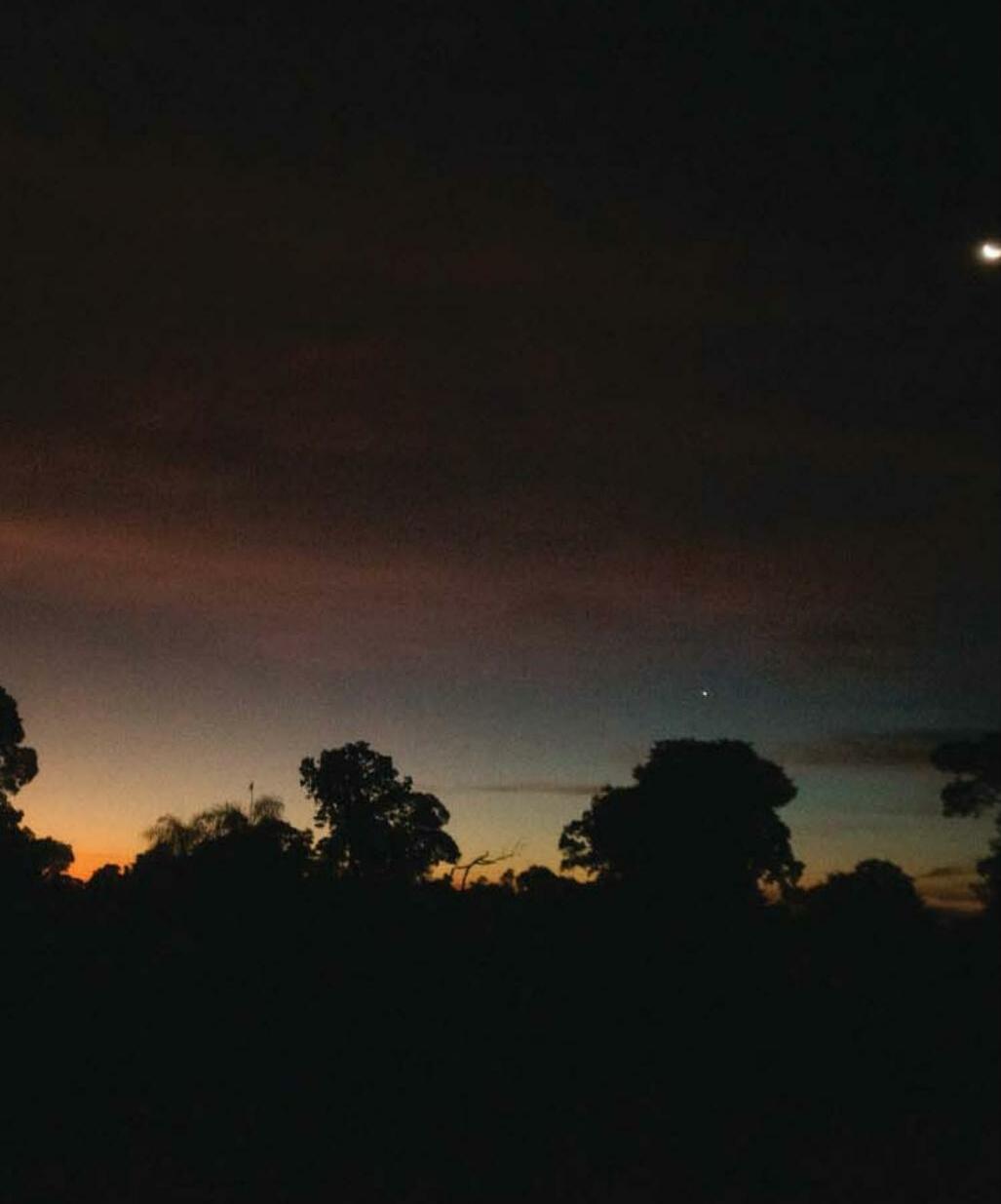NATURE'S KEEPERS

Going up the Amazon River, it was easy to imagine the world was still brand new, untouched by progress or technology. Our little boat was like a time machine, the millennia falling away beneath the bow. This must be how things were at the beginning, I thought, before the arrival of mankind.
Birdsong rang from the jungle. A half-submerged caiman, the South American cousin of the alligator, watched us from the shadows of the bank, only its eyes visible. A giant river otter surfaced with a half-eaten fish. Spider monkeys, dancing through the trees, suddenly stopped to gaze down at us.
Amazonia, the famed 2.5 million-square-mile rainforest, is never just a destination. In the popular imagination, it's an image of prelapsarian wilderness-and the manifestation of our environmental nightmares. According to satellite data, an estimated 110,000 square miles of rainforest in Brazil (an area the size of Nevada) have been lost this century so far, much of it to monoculture agribusiness. And the pace of deforestation, which had been slowing, spiked under the administration of the anti-conservation president Jair Bolsonaro, which lasted from 2019 to 2022.
But I had come to Brazil to explore a more hopeful narrative, to learn how conscious travel can be a tool in the pursuit of habitat protection and wildlife conservation. I visited three eco-lodges that run preservation programs in the country's most vulnerable habitats: the central Cerrado savanna, the southwestern Pantanal wetlands, and the sprawling Amazon rainforest. At each property, surrounded by natural beauty, visitors are encouraged to learn about and help protect these remote biosystems and the species that live there.
THE CERRADO GRASSLANDS-POUSADA TRIJUNÇÃO
Diese Geschichte stammt aus der April 2024-Ausgabe von Travel+Leisure US.
Starten Sie Ihre 7-tägige kostenlose Testversion von Magzter GOLD, um auf Tausende kuratierte Premium-Storys sowie über 9.500 Zeitschriften und Zeitungen zuzugreifen.
Bereits Abonnent ? Anmelden
Diese Geschichte stammt aus der April 2024-Ausgabe von Travel+Leisure US.
Starten Sie Ihre 7-tägige kostenlose Testversion von Magzter GOLD, um auf Tausende kuratierte Premium-Storys sowie über 9.500 Zeitschriften und Zeitungen zuzugreifen.
Bereits Abonnent? Anmelden

Keys to the Kingdom
From premium dining to VIP tours, Walt Disney World Resort is upping its game—and gaining a new generation of superfans.

INTELLIGENT TRAVELER
If last year’s solar eclipse and auroras turned you into an astro-tourist, you're not the only one exploring after dark.

Best Foot Forward
A cancer diagnosis motivated T+L’s Nina Ruggiero Curtis to run her first marathon—on another continent.

The New Girls' Trip
Women are putting a new spin on the idea of “solo” travel by signing on for small-group adventures.

Fiesta Forever
The Spanish port city of Cádiz seduces with grandeur—and grit.

Italian Revival
Sparkling Lambrusco was once ubiquitous. Simon Willis meets the sophisticated vintners behind its comeback.

Better, Together
Women who have lost spouses are finding community through travel.

Tee Up Your Next Trip
From Long Island to Hawaii, top golf events are as much about the destination as the game itself.

MUSE of the MEDITERRANEAN
Why is the blue-chip art world converging on a tiny Greek island? Tony Perrottet explores Hydra, where chill vibes meet cutting-edge creativity.

Shaking It Up
Salt Lake City has been attracting a younger population—and with it, a wave of change.
